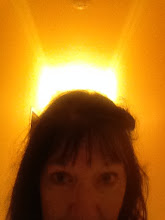I've just discovered that the macaroon as we know it is a mere travesty of the French macaron! I
said excitedly to Pliny the Elder, putting down my copy of Larousse.
How so? he enquired.
Larousse doesn't even mention the coconut macaroon! And yet they claim that the macaroon and the macaron are one and the same. And the name is derived from maccherone, meaning a fine paste, and so is macaroni!
Why are you so excited? Pliny asked.
Because it is exciting! The macaron is a very ancient cake, crunchy on the outside and soft inside, made with ground almonds, sugar and egg whites. The earliest macarons were made by monks in Cormery as far back as 791 AD.
Not so ancient as all that, sniffed Pliny.
Oh, you would say that! They used to make them in the shape of monk's navels.
Whatever for?
Larousse doesn't say.
I can scarcely imagine what shape that could be, other than round, which is a conventional shape for a biscuit.
True. The macarons of Montmorrilon, however, were supposed to have been shaped like coronets.
Very charming, but how could they have looked like coronets when they were meant to be joined together in pairs?
I don't know. Maybe they left a hole in the middle. I also learned that the Carmelite nuns made them in the 17th century because they thought almonds were good for girls that didn't eat meat.
Girls who loved sugar, said Pliny sourly.
And during the Revolution two nuns in Nancy became known as the Macaroon Sisters.
I shall not ask you why, said Pliny.
Monday, September 14, 2009
The Macaroon Sisters
Labels:
Cormery,
ground almonds,
Larousse,
macaroni,
macarons,
macaroons,
maccherone,
Montmorillon
Subscribe to:
Post Comments (Atom)

No comments:
Post a Comment